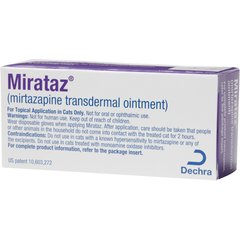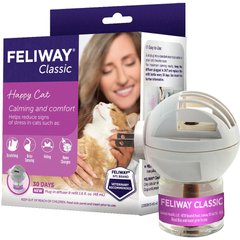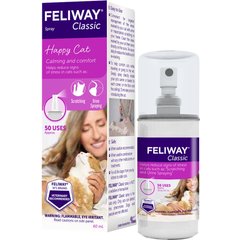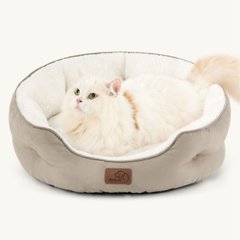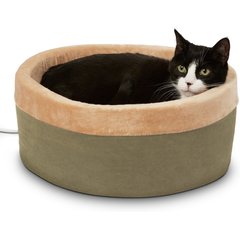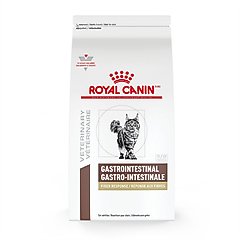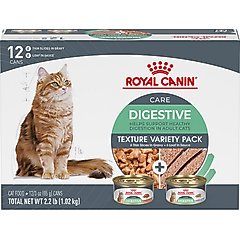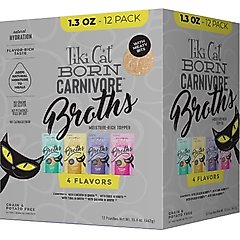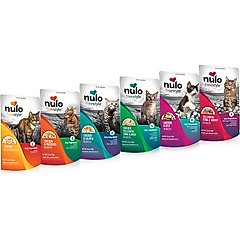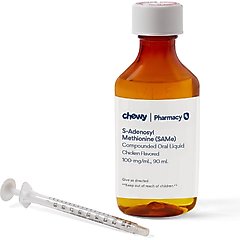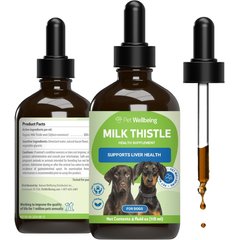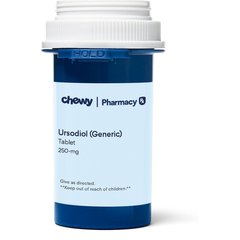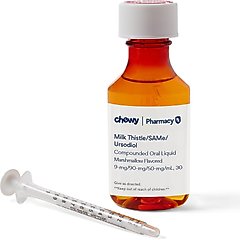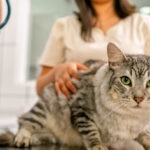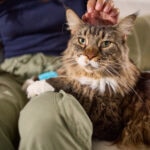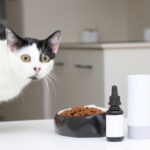What Is Liver Disease in Cats? What Are the Signs?
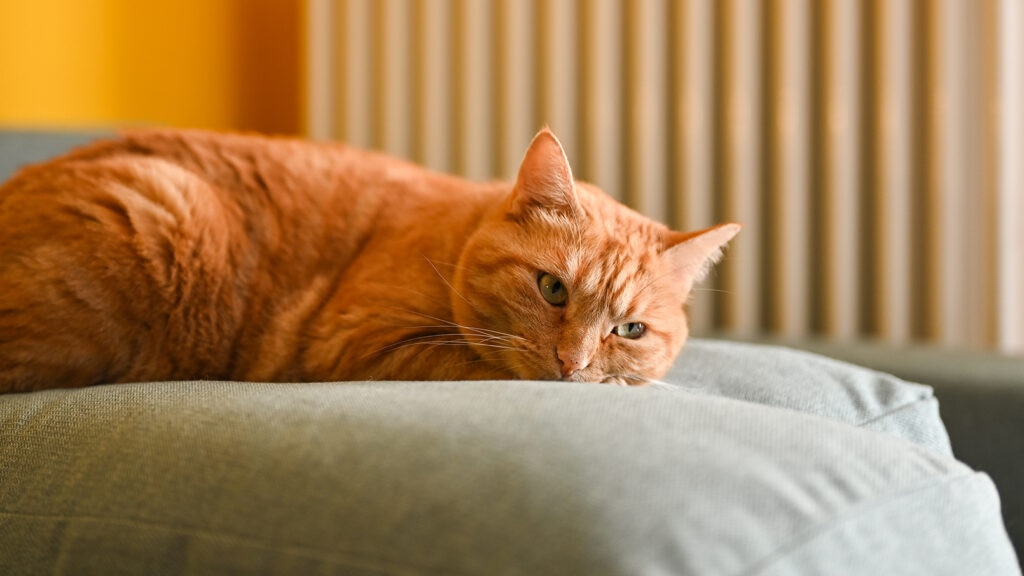
Photo by Yuliya Taba/iStock/Getty Images Plus
The liver is a vital organ that supports digestion, blood clotting, immune function, vitamin storage, and the removal of toxins (yep, it’s kind of a big deal). Liver disease in cats occurs when this multitasking organ isn’t working as it should, which can lead to a whole host of serious health problems.
The good news is the liver has an incredible capacity to heal itself. With the right treatment, many cats can recover, though the outcome depends on the cause and how advanced the condition is when caught.
Here’s what to know about the signs, causes, and how to care for a cat with liver disease.
Key Takeaways
- Liver disease in cats is serious and can be life-threatening, but many cases are treatable when caught early.
- Liver disease has many different causes and can produce a wide variety of symptoms.
- Hepatic lipidosis (fatty liver) is the most common type and is often triggered when a cat stops eating.
- Prevention includes regular vet visits; a consistent, healthy diet; and avoiding toxins.
What Is Liver Disease in Cats?
The liver is a vital organ located just behind the diaphragm, nestled near the stomach, pancreas, and spleen.
Liver disease is an umbrella term for conditions that damage the liver and affect its ability to function properly. When it’s not functioning properly, waste products can build up in the body, leading to serious health issues.
It’s a fairly common issue among cats, especially in middle-aged to older cats. A 2016 study found that about 7% of cats are affected at some point in their life, with hepatic lipidosis (fatty liver disease) being the most common form.
What Is Hepatic Lipidosis in Cats?
Hepatic lipidosis (aka fatty liver disease or feline fatty liver syndrome) is the most common cause of liver failure in cats, says Shannon Barrett, DVM, founder of Downward Paws and owner of Island Veterinary Care, in Isle of Palms, South Carolina.
Fatty liver disease in cats often occurs when a cat stops eating or reduces their food intake, even for just a few days. As a result, the body begins breaking down fat for energy. The liver, responsible for processing this fat, becomes overwhelmed, leading to liver dysfunction, Dr. Barrett explains.
Hepatic lipidosis in cats is considered a medical emergency. If it’s not treated quickly, it can be life-threatening. But with the right care early on, many cats fully recover.
Other Types of Liver Disease
In addition to hepatic lipidosis, several other liver conditions can affect cats. Some of the most common include:
- Hepatitis
- Cholangitis
- Cholangiohepatitis
- Cirrhosis
- Portosystemic shunt (PSS)
- Liver cancer
- Liver cysts
- Fulminant hepatic failure
What Are the Signs of Liver Disease in Cats?
Because the liver handles so many important functions, a wide range of symptoms can appear when it’s not functioning properly. Symptoms of liver disease in cats can include:
- Loss of appetite
- Weight loss
- Lethargy
- Vomiting
- Diarrhea
- Fever
- Jaundice (yellowing of the skin, eyes, or ears)
- Increased thirst and urination
- Temporary blindness
- Stomach distention (due to ascites)
- Pale-colored feces
- Neurologic signs (seizures, disorientation, staring into space, circling)
What Causes Liver Disease in Cats?
Liver disease in cats can develop for many reasons. Here are some of the most common causes of liver disease in cats:
- Infections: Viral, bacterial, fungal, or parasitic infections can directly damage the liver. Examples include feline infectious peritonitis (FIP), toxoplasmosis, and coccidioidomycosis (Valley fever).
- Toxin or drug exposure: Ingesting toxic substances (such as certain plants, chemicals, or certain foods) can overwhelm the liver’s detoxification abilities and cause acute damage.
- Endocrine disorders: Conditions like hyperthyroidism and diabetes mellitus can disrupt normal liver function.
- Sudden fasting: Cats who stop eating are at risk of developing hepatic lipidosis.
- Congenital defects: Some cats are born with liver abnormalities, such as portosystemic shunts, that impair the liver’s ability to detoxify wastes.
- Cancer: Tumors that develop in the liver or spread from another part of the body can interfere with its function.
- Inflammatory diseases: Conditions such as inflammatory bowel disease (IBD) and pancreatitis can affect nearby organs and lead to liver inflammation, especially when combined with bile duct issues (as seen in triaditis), Dr. Barrett explains.
- Obesity: Obesity is a major risk factor for hepatic lipidosis (fatty liver disease), Dr. Barrett says.
- Amyloidosis: Abyssinians, Persians, Siamese, Burmese, Tonkinese, Devon Rex, and Oriental Shorthairs are more prone to a condition called amyloidosis—a buildup of abnormal proteins that can damage the liver, Dr. Barrett notes.
How Do Vets Treat Liver Disease in Cats?
Treating liver disease in cats starts with figuring out what’s causing it. According to Dr. Barrett, this typically involves:
- Medical history: Your vet will ask questions about your cat’s symptoms, diet, behavior changes, and any recent toxin or medication exposure.
- Physical exam: Your vet will check for signs like jaundice, dehydration, weight loss, or abdominal pain.
- Blood tests: Liver enzymes, bilirubin levels, and other blood markers can help assess liver function.
- Urinalysis: Testing your cat’s urine can help rule out urinary tract infections and show how concentrated the urine is.
- Imaging (ultrasound, X-ray, or CT scan): These tools allow the vet to evaluate liver size, shape, and texture and check for cysts, tumors, or gallbladder problems.
- Biopsy: In some cases, a liver tissue sample may be taken, as it’s the most accurate way to determine the exact type of liver disease.
Once a cause (or causes) is determined, your vet will create a treatment plan. According to Jessica Apted, DVM, regional medical director at Sploot Veterinary Care’s Denver, Colorado, metro locations, this may include:
- Nutritional support: A special diet that’s easy to digest can help reduce liver stress.
- Fluid therapy: IV or subcutaneous (under the skin) fluids can help correct dehydration and support liver function.
- Medications and supplements: Depending on the cause, your vet might prescribe antibiotics, antifungals, antivirals, steroids, or liver-supporting supplements.
- Appetite stimulants or feeding tubes: If your cat isn’t eating, your vet might use an appetite stimulant, such as Mirataz, or place a feeding tube.
Recommended Product
- Treatment of underlying conditions: Managing issues such as diabetes, hyperthyroidism, or infections is key to improving liver function.
- Surgery: In rare cases, surgery might be needed to treat a portosystemic shunt or remove a liver tumor.
How Can I Help Manage My Cat’s Liver Disease at Home?
Providing extra care at home can go a long way in supporting your cat’s recovery from liver disease.
Here are some practical ways to keep your cat comfortable and cared for during treatment.
Keep Stress Low
Stress can zap a cat’s appetite, and that can be risky, especially for cats with liver disease, Dr. Apted says.
To help keep your cat calm, create a quiet, predictable environment with cozy bedding (such as the Frisco Adjustable Bolster Cat Bed), limit loud noises and sudden changes, and give them space to rest undisturbed.
Recommended Product
Calming aids, such as Feliway diffusers or Feliway spray, may also help ease anxiety and promote relaxation.
Recommended Products
Provide a Quiet, Comfortable Resting Area
Cats with liver disease may feel lethargic or nauseated.
Soft, easily accessible beds, such as the Bedsure Round Orthopedic Bolster Bed or the K&H Pet Products Thermo-Kitty Heated Cat Bed, offer comfort and help reduce stress during recovery.
Recommended Products
Stick to the Vet-Recommended Diet
Cats with liver disease may benefit from an easy-to-digest diet, such as Royal Canin Gastrointestinal or Royal Canin Digestive Care Variety Pack.
Recommended Products
Dr. Apted adds that if your cat is on a feeding tube, learn how to properly maintain the tube and don’t hesitate to ask your vet any questions.
Encourage Eating With Appetite Stimulants or Toppers
Loss of appetite is common in cats with liver disease.
In addition to an appetite stimulant prescribed by your vet, you can also try tasty toppers, such as Tiki Cat Born Carnivore Broths Variety Pack or Nulo FreeStyle Variety Pack Topper, to entice picky eaters.
Recommended Products
Use Medications and Supplements as Directed
Medications and supplements, such as SAMe, milk thistle, and ursodiol, are commonly used to support liver function in cats with liver disease.
Recommended Products
In some cases, your vet might prescribe a combination product that includes all three for added convenience and effectiveness.
Dr. Apted stresses that supplements like SAMe and milk thistle should be used only under a vet’s guidance.
Monitor for Changes and Keep a Log
Keep track of your cat’s appetite, energy level, litter box habits, and any new or worsening symptoms. Sharing this info with your vet can help them adjust treatment as needed.
Stay on Top of Vet Visits and Lab Work
Routine checkups and blood work are needed to monitor your cat’s progress. Staying on schedule helps your vet catch any complications early.
How Can I Prevent Liver Disease in My Cat?
According to Dr. Apted, not all liver problems in cats can be prevented, but there are a few ways to reduce the risk:
- Maintain a healthy weight. Avoid overfeeding your cat, as obesity increases the risk of fatty liver disease.
- Avoid sudden diet changes. Gradually transition to new foods to prevent digestive upset or loss of appetite.
- Make sure they’re eating consistently. Cats who stop eating, even for a day, are at high risk for hepatic lipidosis. Contact your vet if your cat skips meals or stops eating.
- Avoid toxins and unsafe medications. Keep medications, cleaning products, and toxic plants out of reach.
- Stay on top of vet visits. Annual checkups (or biannual for seniors) and routine lab work can help detect liver issues early.
- Encourage hydration. Proper hydration supports overall organ function. Offer fresh water daily and consider a cat water fountain, such as the PawsPik SS-01 Stainless Steel Cat Fountain, to encourage your cat to drink.
Recommended Product
FAQs About Liver Disease in Cats
How long will a cat live with liver disease?
Lifespan can vary widely depending on the type of liver disease, how advanced it is, and how early treatment begins. Some cats recover and go on to live normal, healthy lives. In more severe cases, the disease can significantly shorten a cat’s lifespan.
Can a cat recover from liver disease?
Yes, many cats can recover, especially if the condition is caught early and treated. Recovery often depends on the specific condition, but issues such as hepatic lipidosis and cholangiohepatitis typically respond well to supportive care, medication, and dietary changes.
Should I change my cat’s diet if they have liver disease?
Always talk to your vet before changing your cat’s diet. Your vet might recommend a diet that’s easier to digest, which can reduce stress on the liver.
What do elevated liver enzymes in cats mean?
Elevated liver enzymes usually indicate that something is stressing or damaging your cat’s liver. It doesn’t always mean liver disease, but it’s a sign that further testing is needed to figure out what’s going on.
What are the symptoms of liver disease in cats?
Common signs of liver disease in cats include loss of appetite, weight loss, vomiting, jaundice, lethargy, increased thirst or urination, and behavior changes. If you notice any of these symptoms, contact your vet ASAP.
